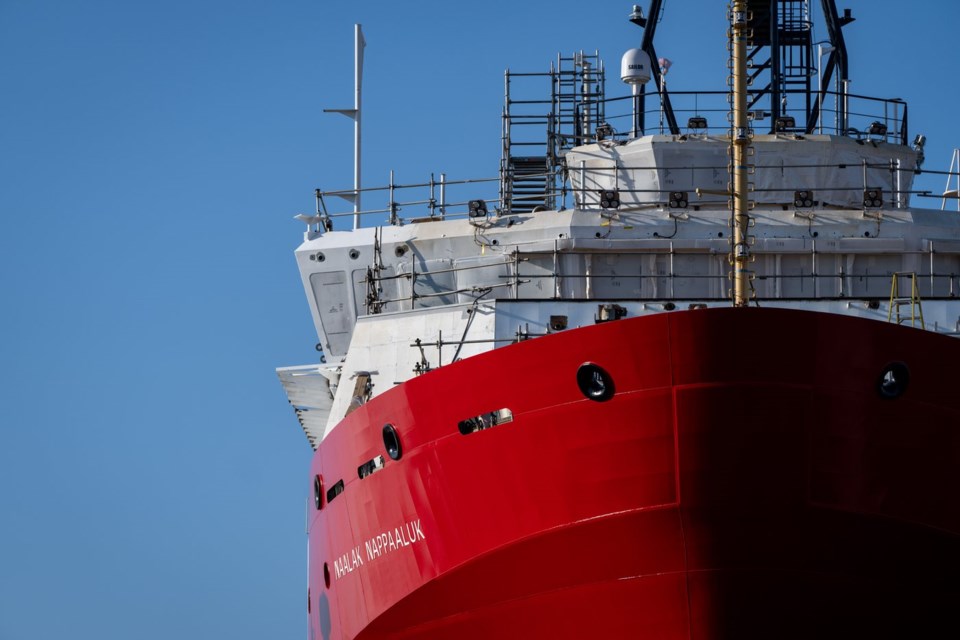OTTAWA — A union official who represents marine search and rescue crews said Monday the union was surprised and “blindsided” by Ottawa’s decision to move the Canadian Coast Guard from the control of the fisheries minister to the defence minister.
Teresa Eschuk, Union of Canadian Transportation Employees national president, said the union is still in the dark about what the changes will mean, since no one from the federal cabinet has reached out to explain the plan and various senior officials have presented conflicting statements.
The prime minister recently promised to expand the civilian maritime force's "security mandate" — a promise that's still causing confusion within the Coast Guard a week after the announcement.
The Union of Canadian Transportation Employees says the clearest update they have received so far has come from Coast Guard Commissioner Mario Pelletier.
Pelletier said in a recent meeting that the Coast Guard will be placed under the control of the minister of national defence — but will not be moving under the Department of National Defence.
"Your guess is as good as mine," Eschuk said when asked what that shift means.
"There’s very little answers at this point because no one knows what’s going on.”
She suggested the full details may not be revealed until the fall budget.
The Prime Minister's Office and Defence Minister David McGuinty's office did not reply to queries on Monday.
Craig Macartney, spokesperson at Fisheries and Oceans Canada, said in an email that the prime minister "will soon initiate the process of moving the Canadian Coast Guard to the leadership of the minister of national defence" and that "more details will be shared as the process moves forward."
"The change will permit the Canadian Coast Guard to better fulfil both its civilian and security responsibilities," he said.
McGuinty said on June 10 that the Coast Guard will be "moving technically under the rubric of the Department of National Defence."
Prime Minister Mark Carney announced a week ago that the Coast Guard will be "integrated" into Canada's NATO defence capabilities — comments made the same day he said Canada will meet its NATO commitment of spending 2 per cent of GDP on national defence this fiscal year.
Canada has consistently failed to hit that mark and has come under heavy pressure from its closest allies to quickly ramp up defence spending. That pressure will only intensify next week when Carney attends the NATO summit in the Netherlands, where alliance partners are expected to discuss setting a new target of five per cent.
Ottawa announced last week a $100 million budget boost for the Coast Guard. Senior bureaucrats said that will mean about 60 per cent of the department's $2.5 billion annual budget can be calculated toward the NATO target.
"We will expand the reach, security mandate and abilities of the Canadian Coast Guard and integrate it into our NATO defence capabilities to better secure our sovereignty and expand maritime surveillance," Carney said on June 9.
But the government has offered few details about what it all means — and talk of a mandate expansion comes smack in the middle of Coast Guard union bargaining with the Treasury Board Secretariat.
Eschuk said many union members are also alarmed by media reports suggesting Coast Guard ships might be armed.
“What I’m hearing from our members is, if they do the arming, this is not the Coast Guard that they signed up for. It's supposed to be civilian,” Eschuk said.
"The Coast Guard is a civilian maritime force and it needs to stay a civilian maritime force."
If the Coast Guard's mandate change is about meeting the NATO spending target, guns might be a requirement.
Conservative defence critic James Bezan said on June 9 that "to be fully counted into defence spending," Coast Guard ships "may need to be armed up" and may need to carry paramilitary forces, not just civilians.
McGuinty said last week that no Coast Guard vessels themselves will be militarized and suggested the change may amount to adding sensors to ships.
"The Coast Guard will continue to play a conservation role, an interdiction role. It will play a monitoring role. It can gather data for us and share it with both onshore and other vessels and it can also, of course, invariably connect to our fighter jets," McGuinty said.
"It will be in a position to gather intelligence, (track) information — who's in our waters, what's happening in our coastal waters, what's happening with submarine activity. Those kinds of things."
At the NATO summit in Washington last year, then-prime minister Justin Trudeau was asked directly about arming the Coast Guard to meet the NATO target by a journalist who suggested putting turrets on ships could solve the problem.
"There may be ways we can shift some accounting or make a little tweak here or give every Coast Guard member a handgun and say, 'OK, we've done our job.' Would that make Canadians safer?" Trudeau said, disparaging the spending target as a "crass mathematical calculation.”
— With files from Catherine Morrison
This report by The Canadian Press was first published June 16, 2025.
Kyle Duggan, The Canadian Press



